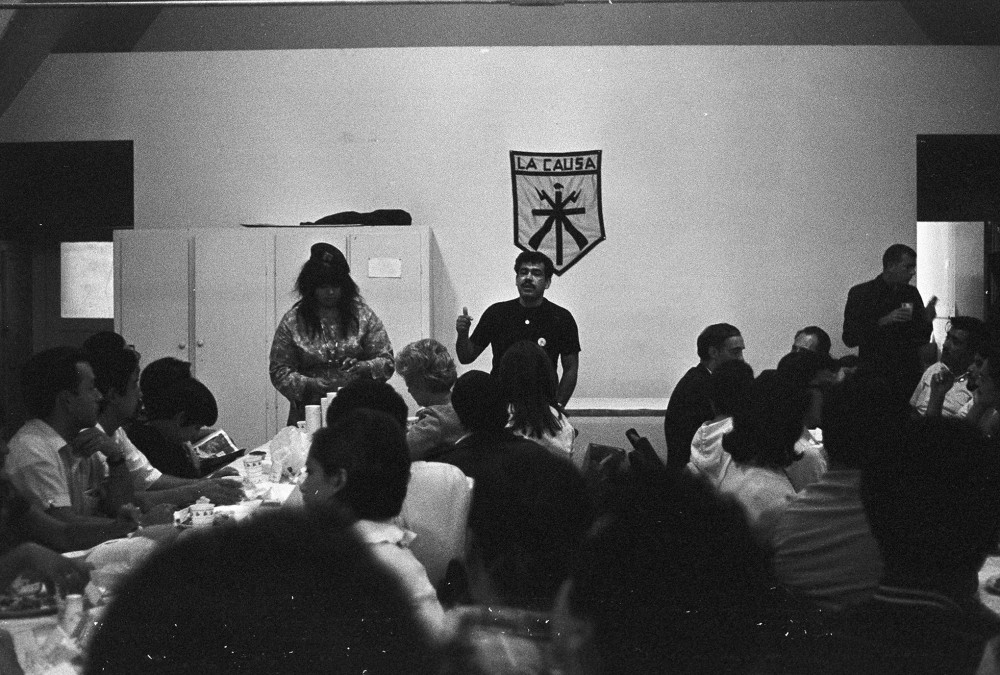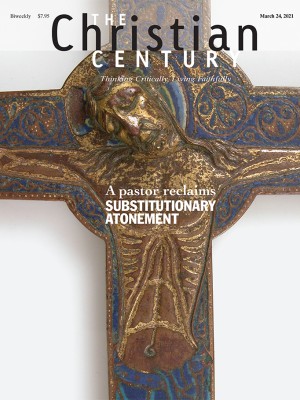California church recognized for role in Chicano movement

Lydia Lopez was demonstrating in a picket line in 1968 to support Mexican American educator Sal Castro, who had been removed from the classroom after participating in student walkouts protesting racism in East LA schools, when UCLA professor Juan Gómez-Quiñones told her of a party at the Church of the Epiphany.
Lopez loved parties, so she decided to go. The Episcopal parish, located in the Los Angeles neighborhood of Lincoln Heights, was embellished with papel picado. Lopez could hear mariachis playing. She recalled being overwhelmed with emotions as she saw how a place of worship embraced her Mexican American identity.
Read our latest issue or browse back issues.
“I wept because I needed a place as a Chicana, and I needed a place as a Christian to call home,” said Lopez, who had gone years without being involved in a church after growing up in a Baptist church that she’d come to feel was too conservative.
The Church of the Epiphany, founded in 1887, became a center for the flourishing Chicano movement in the 1960s. It’s where activists organized around Robert F. Kennedy’s presidential campaign. It’s where leaders met to plan the East LA high school student walkouts protesting inequities in their schools as well as the historic Chicano Moratorium against the Vietnam War draft. Labor leader Cesar Chavez gave speeches in the church hall. In later years, the church played a role in helping Central American refugees fleeing wars.
Now the church has earned a spot on the National Register of Historic Places, the official list of sites worthy of preservation in the United States.
This designation is one of a few listings on the register related to Chicano history. Of the roughly 86,000 designated sites, less than 8 percent were associated with African American, American Latino, Asian American, or other minority groups as of 2014, according to the Congressional Research Service. The church announced its recognition in late January.
“To have that place recognized for what it has done in the community is important,” Lopez said.
Tom Carey, vicar of Church of the Epiphany, said the church has remained relevant all these years. “It has always been a place that has been at the forefront of social activism,” he said.
Epiphany offers up its kitchen to prepare meals for delivery to local families and seniors. Clergy have partnered with other groups to address evictions and deportation arrests. They have participated in Black Lives Matter protests and rallied for grocery workers demanding hazard pay.
To Carey, what makes a place sacred “is what has gone on there in the past” and “what continues to happen there.”
In announcing the national designation, the church launched a GoFundMe initiative to raise $230,000 for a series of renovations. The fundraiser is part of the final phase of a $1 million Restore Epiphany Campaign to help fund the church’s preservation. As of mid-February, the church had raised more than $780,000.
Funds are earmarked toward Epiphany’s leaking basement, which was home to the Chicano newspaper La Raza and stores photos and documentation of the church’s history. The money will also go toward protecting the archives, installing an elevator for ADA access, and creating meeting rooms for legal and health clinics. The church also plans to update the heating and cooling systems.
“It’s an important moment to capture the important role of the church,” said Armando Vazquez-Ramos, who grew up in Lincoln Heights after emigrating from Mexico in 1961. “I hope to God it will continue to be an activist, community-minded church.”
While Vazquez-Ramos identifies as agnostic today, Epiphany has played an important role in his life. He described the church as a “mecca” and a “birthplace” of the Chicano movement.
As a college student at Cal State Long Beach, he remembers attending meetings in the church’s basement to help his former high school teacher Sal Castro plan the student walkouts.
Raised Catholic in Mexico, Vazquez-Ramos became disillusioned with the churches he attended in the US, where he said the mass was in Latin. He recognized inequities within the church and became an activist with Católicos por La Raza, a Catholic lay group formed by Mexican Americans in 1969.
The group called out the Catholic Church for its lack of involvement with the farmworker movement led by Chavez and for a lack of support for the walkout movement. Católicos por La Raza is perhaps best known for its 1969 confrontation at St. Basil Catholic Church in LA, where it clashed with police on Christmas Eve as its members tried to confront Cardinal James Francis McIntyre about what they said was the church’s neglect of people without economic resources.
Fifty years later, Vazquez-Ramos helped organize a 2020 reunion of the now-disbanded group to commemorate the famed demonstration. It was held at Epiphany.
To Vazquez-Ramos, many religious institutions are “about making money.”
“But here is the difference,” he said. “The Church of the Epiphany continues to be an institution committed to helping its community.”
The church’s recognition, Vazquez-Ramos said, is “historically important to our community, because there are so many landmarks that are often ignored because they’re not part of the mainstream of America.” —Religion News Service





